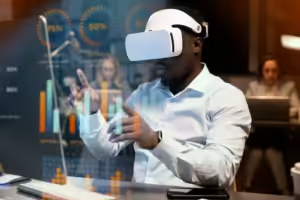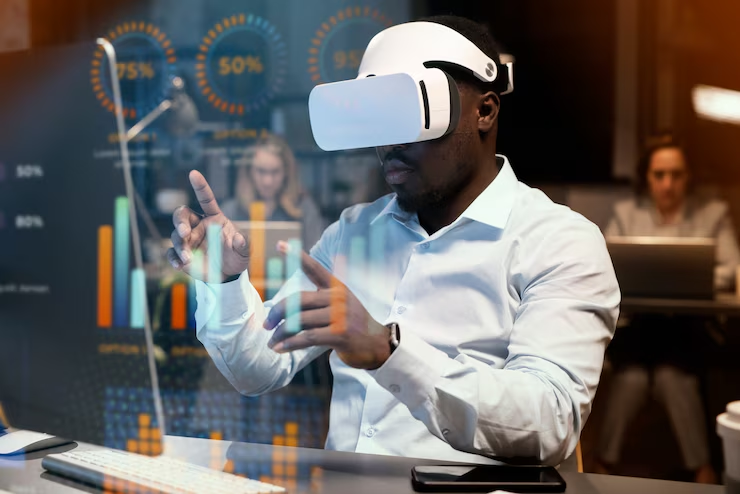
Digital Twin Technology is rapidly transforming industries and redefining how we interact with the physical world. As the digital representation of a physical object or system, a digital twin mirrors its real-world counterpart in real-time, enabling unprecedented insights and optimizations. By integrating this innovative technology, businesses can enhance performance, reduce costs, and drive innovation. Let’s explore how Digital Twin Technology is becoming a game-changer across various sectors.
What is Digital Twin Technology?
Digital Twin Technology involves creating a virtual replica of a physical object, process, or system. This digital model continuously updates with real-time data from sensors and IoT devices, reflecting the current state of its physical counterpart. As a result, businesses can monitor, analyze, and optimize performance with remarkable accuracy. Moreover, digital twins facilitate predictive maintenance, operational efficiency, and informed decision-making, making them indispensable tools in today’s data-driven world.
Transforming Industries with Digital Twin Technology
Manufacturing Excellence
In manufacturing, Digital Twin Technology revolutionizes operations by enabling real-time monitoring and control. Manufacturers create digital twins of production lines to simulate and optimize processes. This approach identifies bottlenecks, predicts equipment failures, and enhances product quality. As a result, companies reduce downtime, minimize defects, and increase overall efficiency.
For example, General Electric (GE) uses digital twins to monitor its jet engines. By analyzing data from sensors on the engines, GE predicts maintenance needs and prevents failures before they occur. This proactive approach not only ensures safety but also extends the lifespan of critical assets.
Smart Cities and Infrastructure
Digital Twin Technology plays a crucial role in developing smart cities. Urban planners and administrators create digital twins of entire cities to monitor and manage infrastructure, energy consumption, and public services. These virtual replicas enable real-time analysis of traffic patterns, environmental conditions, and resource utilization.
In Singapore, the Virtual Singapore project exemplifies the power of digital twins. This initiative uses a comprehensive 3D digital model of the city to simulate urban scenarios, optimize traffic flow, and enhance emergency response. By leveraging digital twin technology, Singapore aims to improve the quality of life for its residents and create a more sustainable urban environment.
Healthcare Advancements
The healthcare industry also benefits immensely from Digital Technology. By creating digital twins of patients, healthcare providers can personalize treatment plans and improve patient outcomes. These virtual models integrate data from medical devices, wearables, and electronic health records to provide a holistic view of a patient’s health.
For instance, Philips Healthcare develops digital twins of patients to simulate and optimize medical procedures. Surgeons use these virtual models to plan complex surgeries, anticipate complications, and ensure precise outcomes. As a result, digital twins enhance surgical precision, reduce risks, and accelerate recovery times.
Enhancing Daily Life with Digital Twin Technology
Personalized Experiences
Digital Twin Technology extends beyond industries and into our daily lives. Smart home devices, equipped with digital twins, learn our preferences and optimize comfort and energy usage. For example, smart thermostats create digital twins of homes to adjust temperature settings based on occupants’ behavior, leading to energy savings and increased comfort.
Automotive Innovation
The automotive industry leverages digital twins to enhance vehicle performance and safety. Car manufacturers create digital twins of vehicles to simulate and test various scenarios, from crash tests to fuel efficiency. By analyzing data from these virtual models, engineers can refine designs, improve safety features, and optimize performance.
Tesla, a pioneer in electric vehicles, uses digital twins extensively. The company’s vehicles continuously collect data, creating digital twins that inform software updates and performance improvements. This dynamic feedback loop ensures that Tesla cars remain at the forefront of innovation and safety.
The Future of Digital Twin Technology
Expanding Horizons
The potential applications of Digital Technology are vast and continually expanding. As more industries recognize its benefits, the adoption of digital twins will accelerate. From agriculture to aerospace, digital twins will drive efficiency, innovation, and sustainability.
Ethical Considerations
However, the rise of Digital Technology also raises ethical considerations. Ensuring data privacy, security, and transparency is crucial as digital twins become more integrated into our lives. Companies must adopt robust data governance practices to protect sensitive information and build trust with users.
Conclusion
Digital Twin Technology is revolutionizing the future, offering unprecedented insights and optimizations across industries and daily life. By creating real-time digital replicas, businesses can enhance performance, reduce costs, and drive innovation. As we embrace this transformative technology, it is essential to balance innovation with ethical considerations, ensuring a future that is both intelligent and responsible. Digital Twin Technology, with its limitless potential, is undoubtedly a key driver of progress in the modern world.
